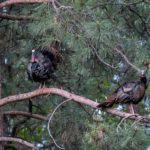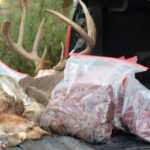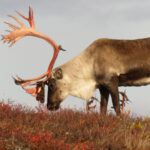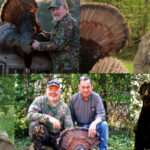A favorite pastime for outdoor writers is collecting myths, rural legends, and conspiracy theories about hunting and fishing.
About the time one story finishes its rounds, another takes its place. And if you don’t hear one particular myth during its first cycle, be patient. It will return soon enough.
Among deer hunters, the most enduring of all tall tales involves insurance companies. Every time a wildlife agency sells lots of antlerless tags, people claim insurance lobbyists are pressuring legislators and agency chieftains to reduce deer populations. After all, folks assume insurance companies are losing millions to auto-body shops to pay for damage caused by deer-vehicle collisions.
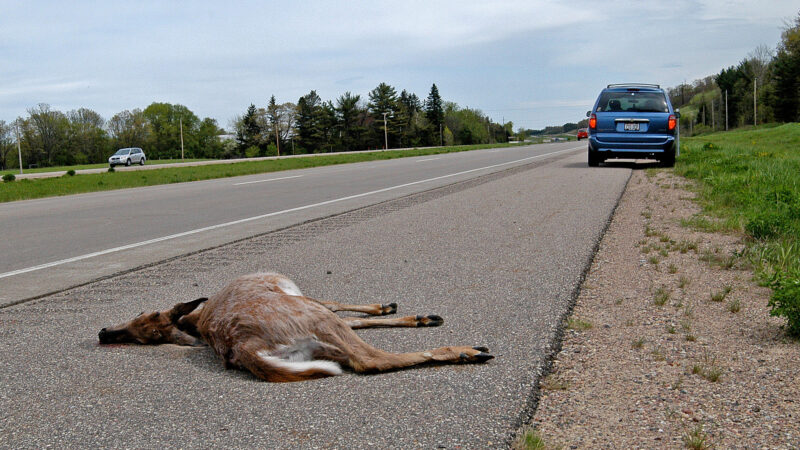
The fact is, insurance companies don’t lose money on something that’s so predictable. Realize that this is an industry with highly skilled actuaries who know how to beat the odds when insuring people on risks to their health, life, home and other property. Highly variable factors tied to our age, ethnicity, health, habits, family history, and neighborhood are far less predictable than deer-vehicle crashes.
In contrast, if you own a car in areas with lots of deer-vehicle collisions, insurance companies simply boost your premiums, especially if you’re a young male driving a new, expensive vehicle. And if you hit too many deer over a specified period, the insurer raises your rates, or cuts its losses by canceling your policy or refusing to renew it.
But as rural legends go, myths about deer and insurance companies are boring stuff. Hunting regularly spawns tall tales that live until a sexier one replaces them. About 35 winters ago, for example, deer across Wisconsin’s farmlands were said to be eating moldy corn and dying in droves from a nasty toxin.
Somehow, though, the ailment always struck deer at least 20 miles from wherever you heard the story. Further, no one could provide a name or address for the afflicted farm. The rumor was so convincing that it even fooled a wildlife professor at the University of Wisconsin-Stevens Point. After sounding the alarm, however, the biologist helped squelch the rumor after failing to track down the farmer who reported the mass die-off. He acknowledged his search for the farmer had been a fool’s errand, because no such farmer even existed.
About a year later, another myth took off: Wild turkeys across vast regions of the Great Lakes states were freezing to death on their roosts after a large, nasty January ice storm. The claim seemed plausible because the storm struck at night and ice blanketed the region’s trees and fields by morning. Plus, wild turkeys were relatively new to the region in the early 1990s, and some people considered them vulnerable to the North’s brutal winters.
As usual, folks claimed that a farmer “just outside town” found 20 to 30 wild turkeys frozen solid in roost trees and on the ground below. But when media or wildlife-agency staff requested the farmer’s name and address, no one could deliver either. When pressed, the rumor-mongers said things like, “The farmer doesn’t want any media or government types snooping around.”
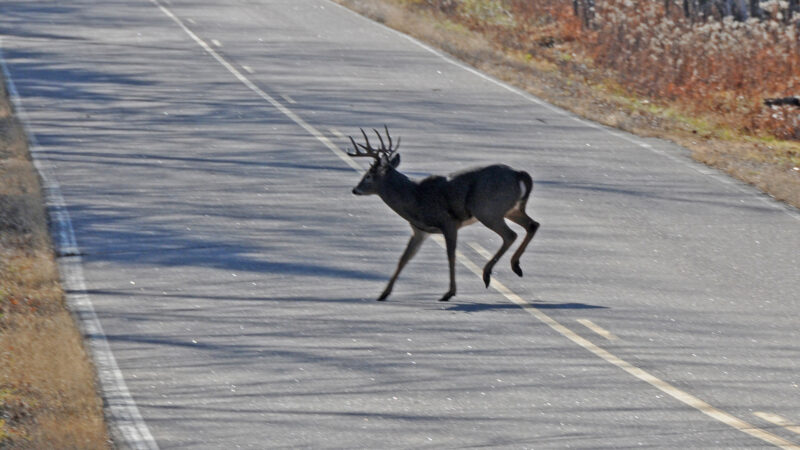
White-tailed deer also suffer phantom mass executions when folks hear that a wildlife agency is issuing shooting permits to farmers who lose crops to overpopulated deer herds. Next, someone’s brother-in-law — a friend of some farmer’s cousin — heard lots of shooting one night on Cousin Smith’s farm. The death toll skyrockets within hours:
“He found 19 dead deer scattered around the field the next morning!”
Such stories unravel when rumor-mongers can’t answer an obvious question: “Why didn’t the other 18 deer flee when the shooting started?”
Even ruffed grouse have sparked at least one rural legend from the Northwoods. Although it’s more complicated than most rumors of poisonings, shootings or mass-freezings, this multi-step rural legend isn’t hard to follow.
Most hunters know ruffed grouse populations follow a loose seven-year cycle between peaks and valleys. One possible explanation for those fluctuations is a link to the population cycles of forest tent caterpillars, which feed heavily on aspen leaves, a grouse food source. In turn, when caterpillars are abundant, they provide a great food source for Sarcophaga aldrichi, a gray, red-eyed “flesh fly” that’s slightly larger than houseflies.
Since the 1950s, every time Northwoods residents of Minnesota, Wisconsin, northwestern Ontario or Michigan’s Upper Peninsula see massive numbers of flesh flies, they start flooding wildlife agencies with phone calls. Folks far and near accuse the government of releasing the insects from airplanes to prey on tent caterpillars.
Yes, flesh flies are a natural enemy of tent caterpillars, but both lived here long before humans crossed into North America from eastern Siberia 10,000 years ago. Trouble is, these flies don’t bite, sting or spread diseases. They just lay eggs in the cocoons of tent caterpillars.
Further, nature’s slow-motion cycles play out over two to three years. Their maggots eat the cocoon’s pupae and drop to the ground for winter. The next spring, adult flies emerge a few weeks before the caterpillars spin their cocoons, and strike again. All that feasting slashes tent-caterpillar populations the next year. When tent caterpillar decline, fly numbers soon slide, too.
That rumor at least has plausible origins: When the Great Lakes’ Northern forests endured infestations of jack-pine budworms in the 1950s, agency foresters sprayed insecticides from airplanes in futile efforts to control the budworms.
When flesh fly numbers started booming about a week later, folks “connected the dots,” and assumed “the government” released them. A half-century later, people still believe the tale, even though no one has ever identified the facility that secretly raises flesh flies by the millions.
Flies aren’t the only suspicious creatures wildlife agencies supposedly drop from airplanes. About 25 years ago, many Wisconsinites accused their Department of Natural Resources of using planes and parachutes to stock massasauga rattlesnakes to control wild turkeys in some locales.
Obviously, that defies logic. Turkeys sometimes eat young rattlesnakes, but no research shows the opposite. Besides, why would a wildlife agency enlist rattlesnakes to kill turkeys when the state’s hunters were shooting about 50,000 of them annually in spring and autumn hunting seasons?
It’s impossible to answer such questions, at least with factual, rational answers. That’s probably why myths and rural legends never really die. They just fade into the clouds until parachuting into the next information vacuum.

 By
By 